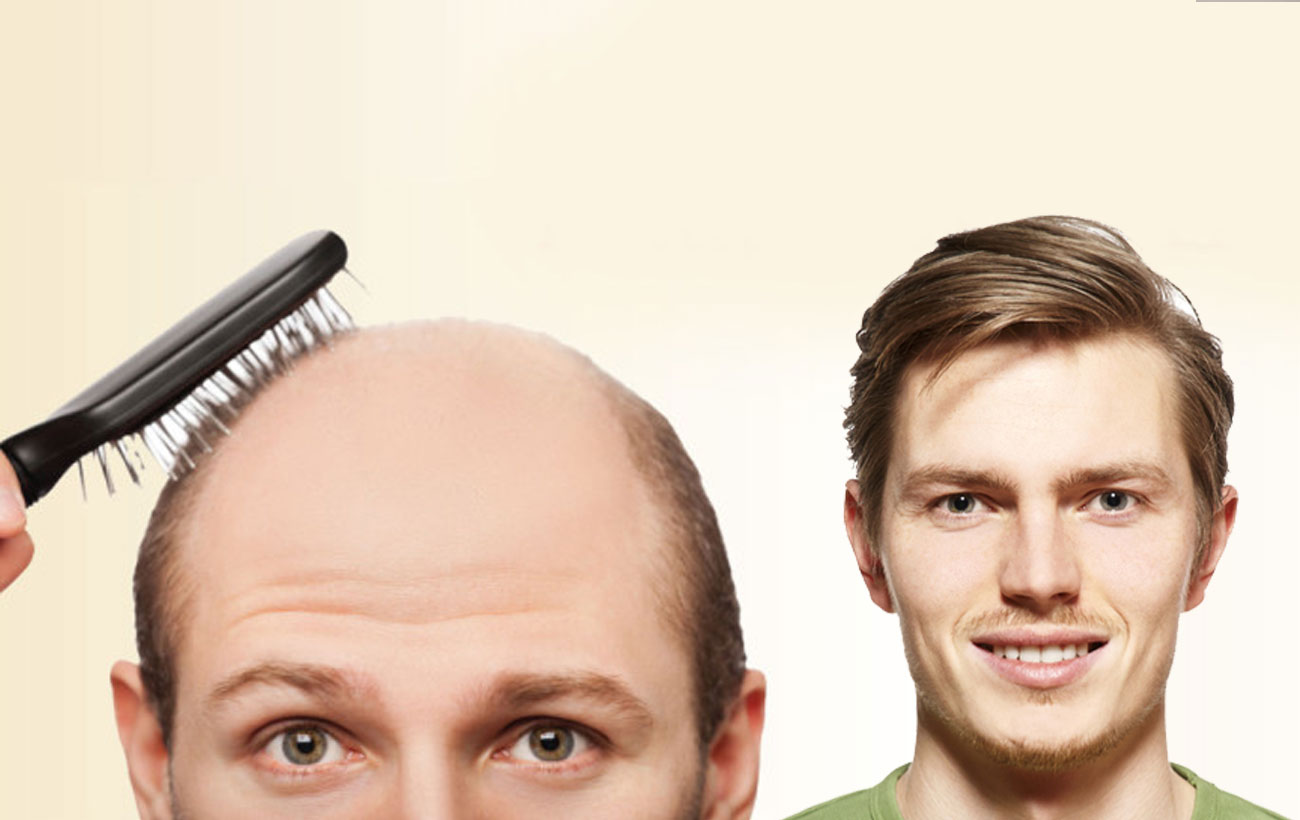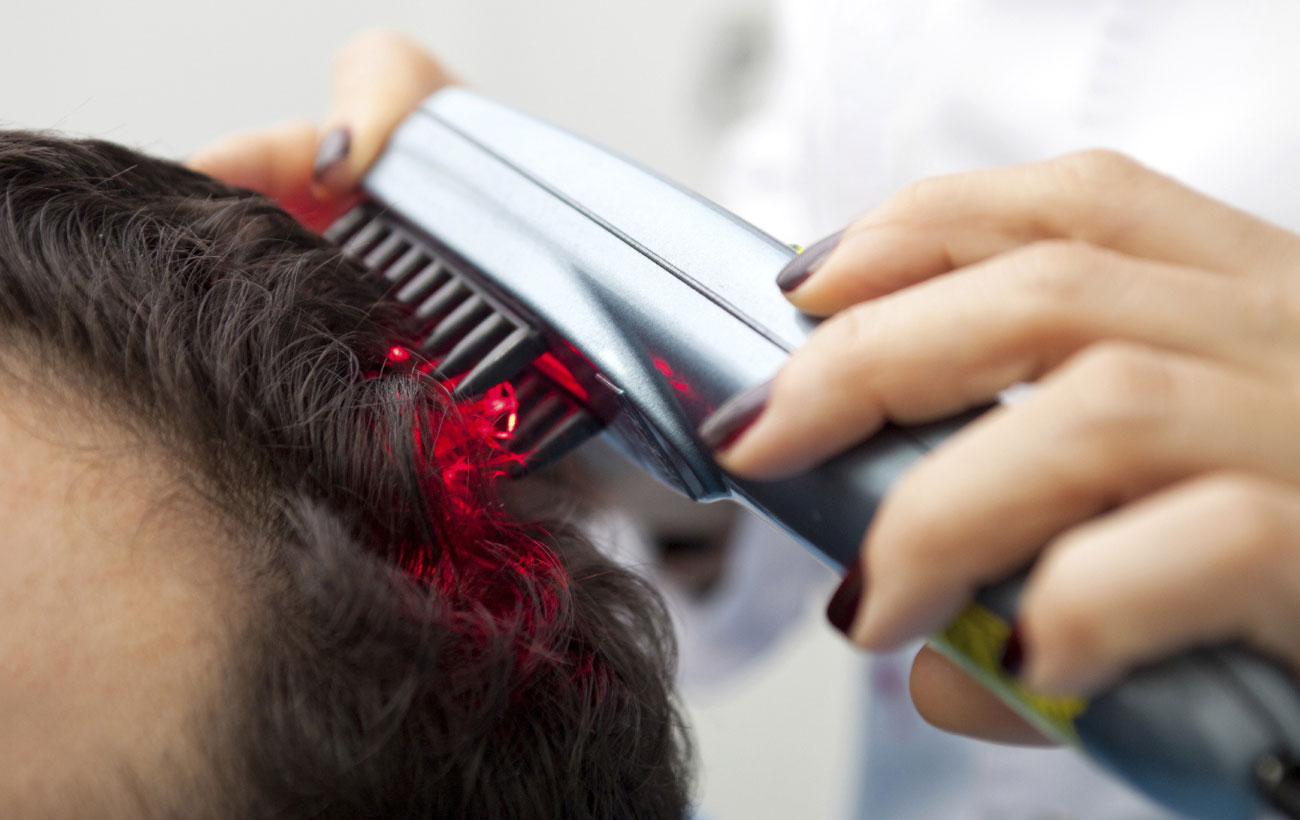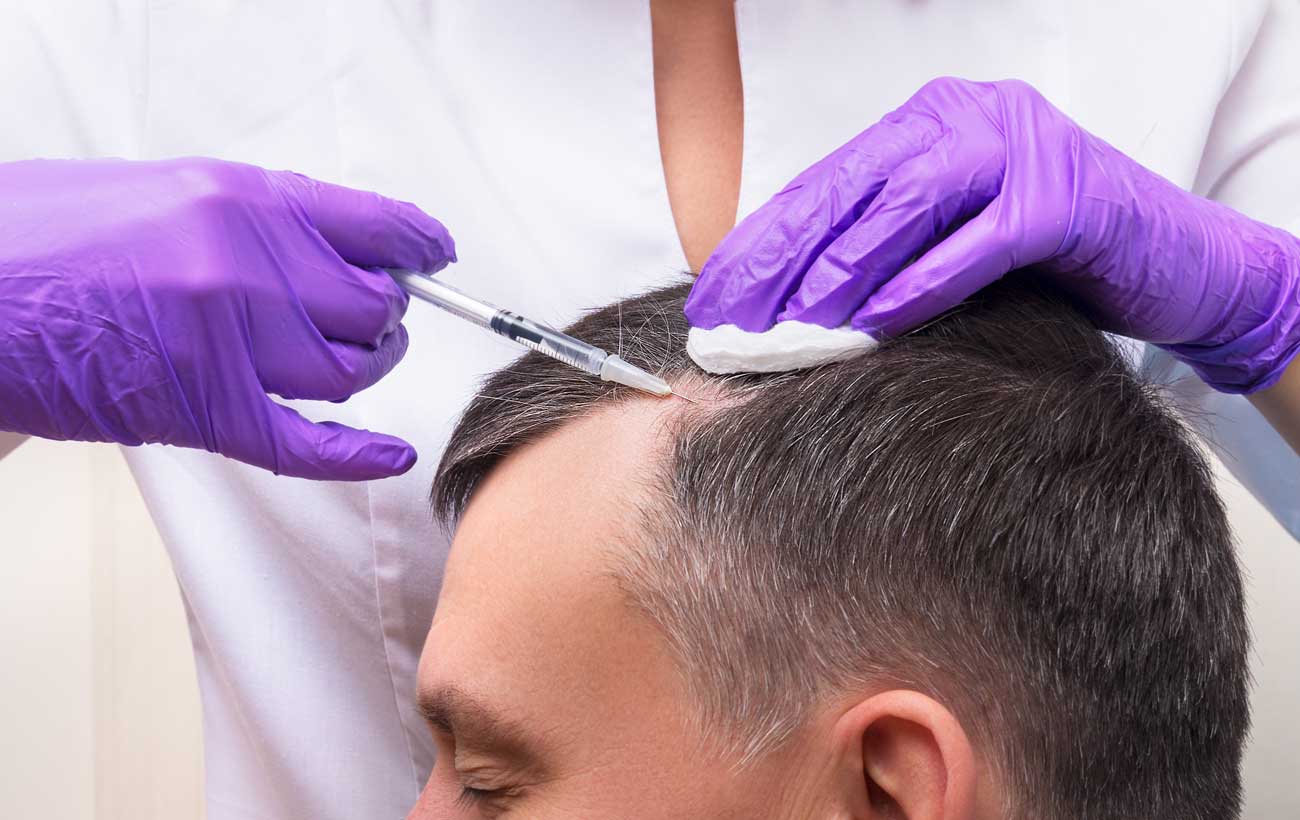Surgical treatment includes (i) hair transplantation, a procedure where hair follicles are taken from the…

Applying 5% minoxidil (Rogaine) liquid or foam to the scalp may help to slow down the progression of hair loss and partially restore hair. It is not typically available on national healthcare systems prescription and is expensive. The liquid or foam should be applied to the affected scalp (not the hair) using a dropper or pump spray device. It should be spread over the affected area lightly and does not need to be massaged in. Minoxidil can cause skin reactions such as dryness, redness, scaling and/or itchiness at the site of application and should not be applied if there are cuts or open wounds. It needs to be used for at least 6 months before any benefit may be noted. Any benefit is only maintained for as long as the treatment is used. Minoxidil solution may cause an initial hair fall in the first 2-8 weeks of treatment, and this usually subsides when the new hairs start to grow.
For men, finasteride (Propecia) tablets reduce levels of dihydrotestosterone (hormone), which may slow hair loss and possibly help regrowth of hair. Continuous use for 3 to 6 months is required before a benefit is usually seen. Decreased libido and erectile problems are recognized side-effects of this treatment. Any beneficial effects on hair growth will be lost within 6 to 12 months of discontinuing treatment.
for women, Oral treatments such as spironolactone, cyproterone acetate, flutamide and cimetidine can block the action of dihydrotestosterone (a hormone) on the scalp, which may lead to some improvement in hair loss. These treatments are not licensed for use in FPHL. Spironolactone and cyproterone acetate should be avoided in pregnancy since they can cause feminization of a male fetus; both should be avoided during breast feeding. Flutamide carries a risk of damaging the liver.
It is important to note that all of the topical and oral treatments only work for as long as the treatment is continued.



